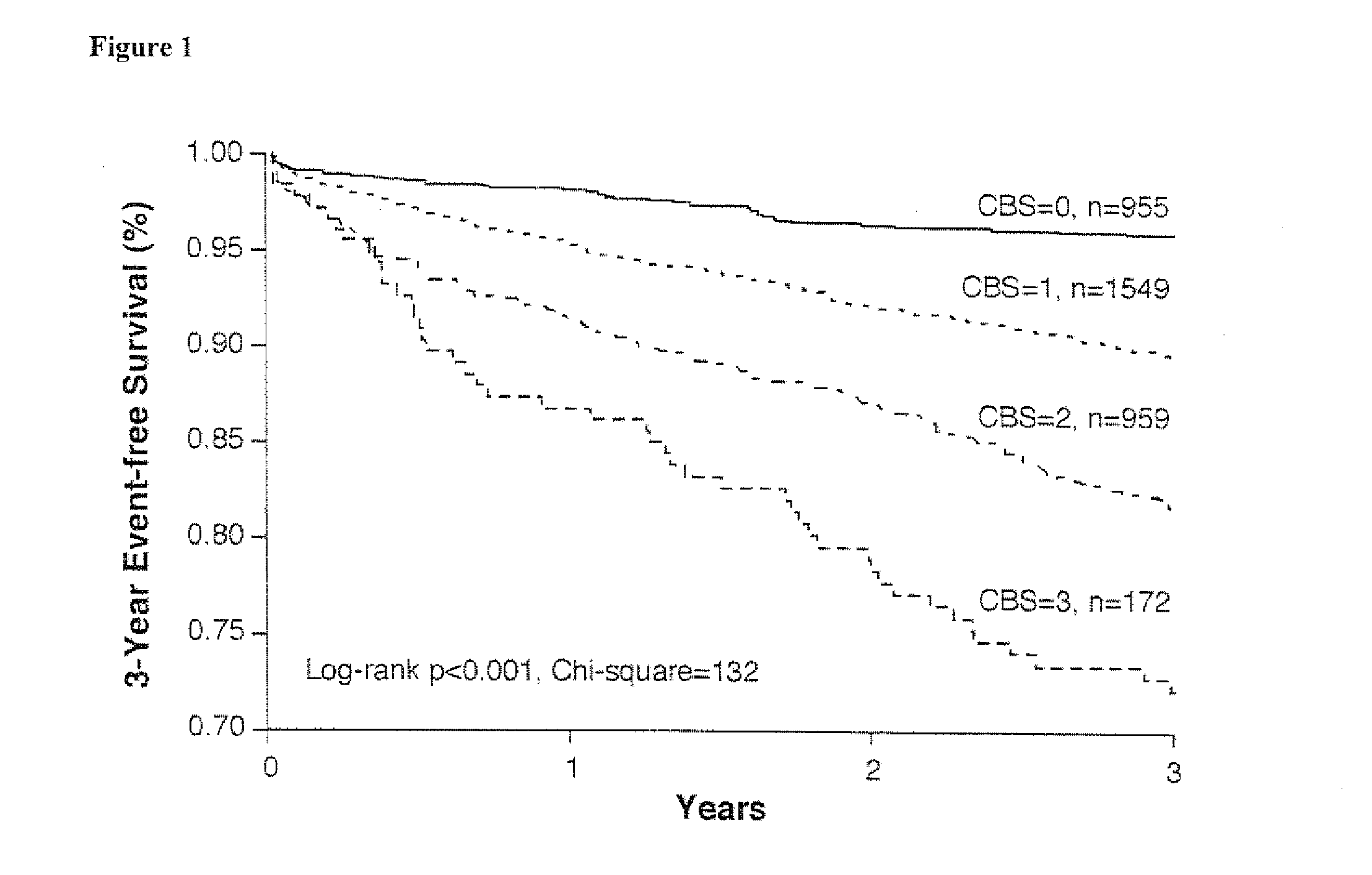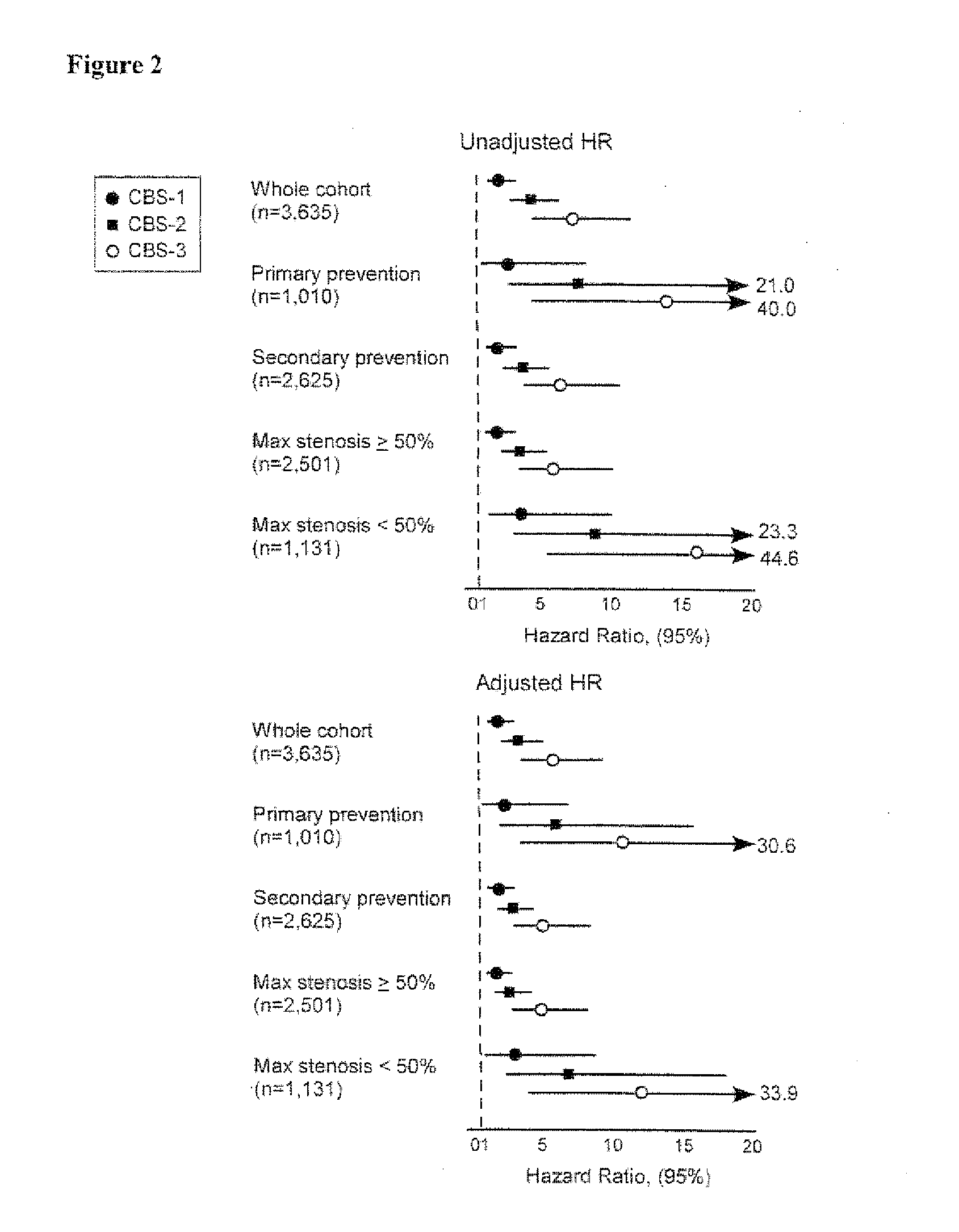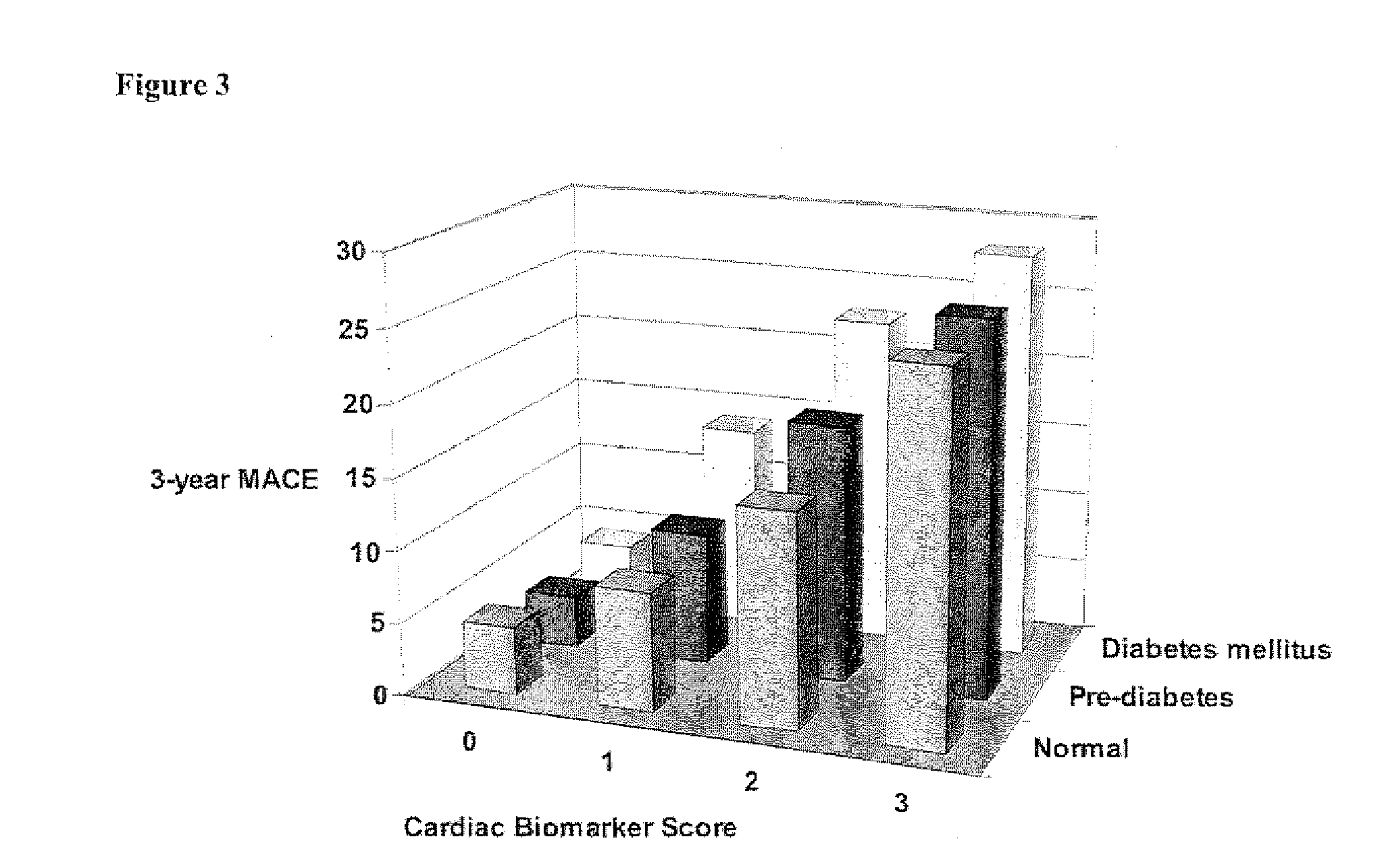Use of multiple risk predictors for diagnosis of cardiovascular disease
a risk predictor and cardiovascular disease technology, applied in the field of cardiovascular disease diagnosis, can solve the problems of large number of cvd complications in individuals with low to moderate risk profiles, limited ability of these methods to identify individuals with a higher probability of developing cvd, and inability to establish clinical utility of determining these biomarkers simultaneously in a stable non-acute patient cohort , to achieve the effect of improving cardiovascular life styl
- Summary
- Abstract
- Description
- Claims
- Application Information
AI Technical Summary
Benefits of technology
Problems solved by technology
Method used
Image
Examples
example
Usefulness of Cardiac Biomarker Score for Risk Stratification in Stable Patients Undergoing Cardiac Evaluation across Glycemic Status
[0091]The inventor prospectively evaluated 3,635 consecutively consented subjects undergoing elective cardiac catheterization recruited between 2001 and 2006 without evidence of myocardial infarction (cardiac troponin I [cTnI]JAMA 285:2486-2497 (2001). An estimate of creatinine clearance (CrCl) was calculated using the Cockcroft-Gault equation. Coronary artery disease was defined as any clinical history of myocardial infarction, percutaneous coronary intervention, coronary artery bypass surgery, or angiographic evidence of coronary artery disease (≧50% stenosis) in one or more major coronary arteries. Glycemic status and clinical definition of diabetes mellitus, “pre-diabetes,” and non-diabetes are defined by the latest practice guidelines based on fasting glucose and glycated hemoglobin levels (fasting glucoseDiabetes Care 35 Suppl 1:S11-63 (2012). Ad...
PUM
| Property | Measurement | Unit |
|---|---|---|
| molecular mass | aaaaa | aaaaa |
| diameter | aaaaa | aaaaa |
| size | aaaaa | aaaaa |
Abstract
Description
Claims
Application Information
 Login to View More
Login to View More - R&D
- Intellectual Property
- Life Sciences
- Materials
- Tech Scout
- Unparalleled Data Quality
- Higher Quality Content
- 60% Fewer Hallucinations
Browse by: Latest US Patents, China's latest patents, Technical Efficacy Thesaurus, Application Domain, Technology Topic, Popular Technical Reports.
© 2025 PatSnap. All rights reserved.Legal|Privacy policy|Modern Slavery Act Transparency Statement|Sitemap|About US| Contact US: help@patsnap.com



